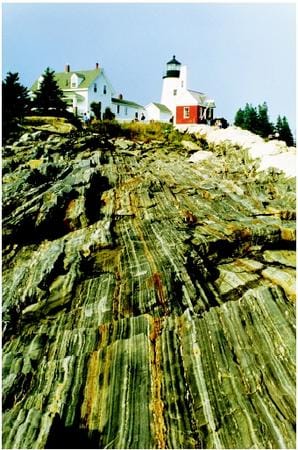Beneath the waves of the Pacific Ocean lies a colossal underwater mountain range known as the Hawaiian-Emperor seamount chain, an extraordinary geological feature that has captured the attention of scientists and oceanographers alike. This remarkable structure, which extends over 3,700 miles (approximately 6,000 kilometers) from the Hawaiian Islands to the Aleutian Trench, was formed by a hotspot—a plume of molten rock rising from deep within the Earth’s mantle. As the Pacific tectonic plate moves over this stationary hotspot, it creates a series of volcanic islands and seamounts that tell a story of geological evolution spanning millions of years.
The concept of a hotspot was first proposed in the 1960s and has since been supported by extensive research. Hotspots are not located at tectonic plate boundaries, unlike most volcanic activity, which is typically associated with subduction zones or rift valleys. Instead, they can occur within tectonic plates, leading to the formation of volcanic islands as the plate moves over the stationary hotspot. The Hawaiian Islands are the most famous example of this phenomenon, with the youngest island, Hawaii, still experiencing volcanic activity today. According to a study published in the journal *Nature Geoscience*, the Hawaiian-Emperor seamount chain is a prime example of how hotspots can create massive underwater mountain ranges that shape oceanic landscapes (source: https://www.nature.com/articles/ngeo3059).
Recent advancements in underwater mapping technology have allowed scientists to explore these submerged mountains in unprecedented detail. Utilizing sonar and autonomous underwater vehicles (AUVs), researchers have been able to capture high-resolution images of the seafloor, revealing the intricate topography of the seamounts and the ecosystems that thrive in these remote environments. A study conducted by the National Oceanic and Atmospheric Administration (NOAA) highlighted the biodiversity found around these underwater mountains, which serve as vital habitats for various marine species, including corals, fish, and invertebrates (source: https://oceanexplorer.noaa.gov/explorations/20mysteries/welcome.html).
The Hawaiian-Emperor seamount chain not only offers insights into geological processes but also plays a crucial role in understanding ocean circulation and climate change. The underwater mountains influence ocean currents, which in turn affect weather patterns and marine ecosystems. As climate change continues to impact ocean temperatures and acidity, understanding these interactions becomes increasingly important for predicting future changes in marine environments.
In conclusion, the Hawaiian-Emperor seamount chain stands as a testament to the dynamic nature of our planet. Formed by the interplay of tectonic activity and the stationary hotspot beneath the Pacific Ocean, this massive underwater mountain range reveals the complexities of geological processes and their far-reaching implications for marine ecosystems and climate. Continued research and exploration of these underwater giants will undoubtedly enhance our understanding of Earth’s geological history and the interconnectedness of its systems.


